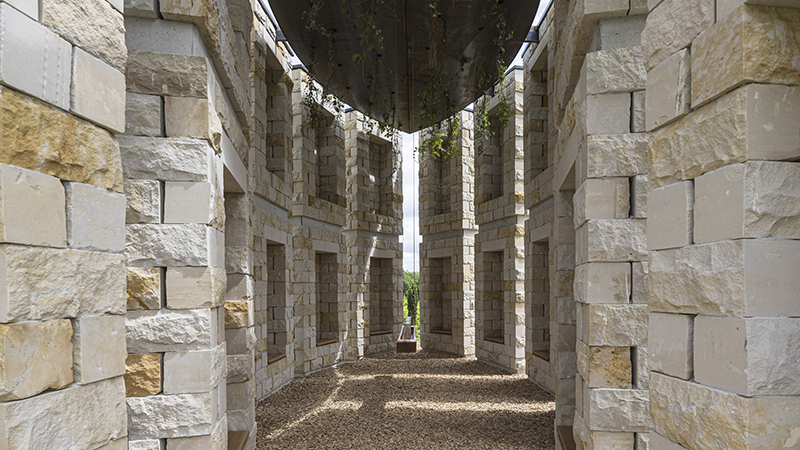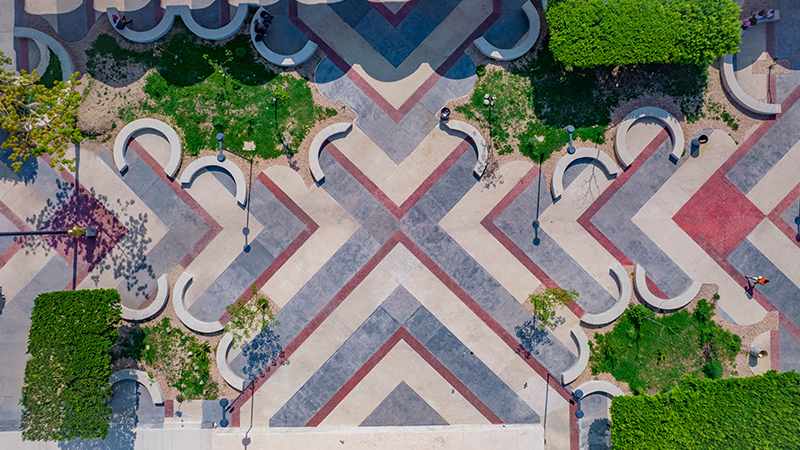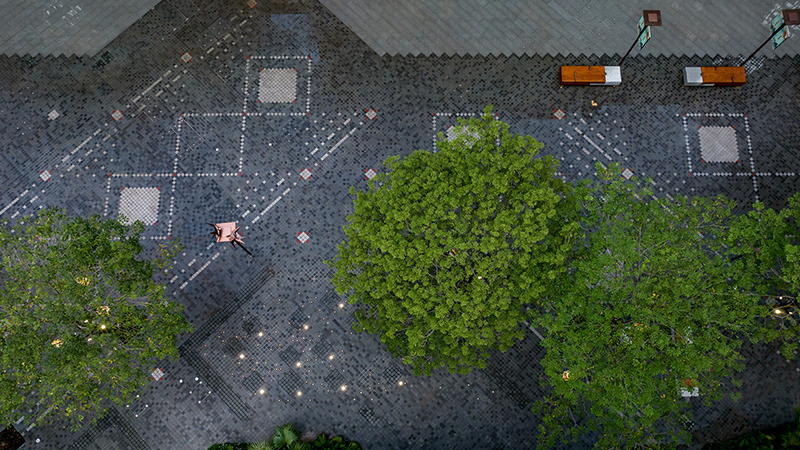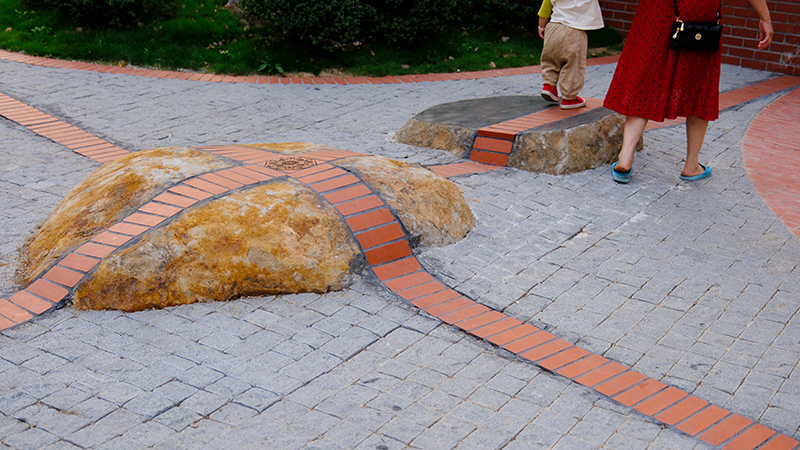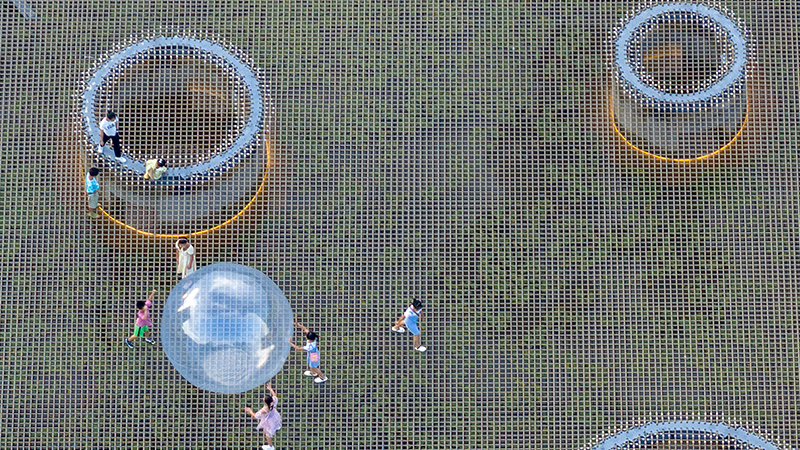斯坎德贝格广场改造项目是51N4E在2008年赢得国际建筑竞赛的结果。该竞赛的提议是与阿尔巴尼亚艺术家安里•萨拉(Anri Sala)合作构思的,它以一种简单而激进的方式重组了地拉那的中央广场,这是一个巨大的前共产主义空间。在一个复杂而密集的城市环境中,在这个既是阿尔巴尼亚首都核心又是整个国家象征的地方,该项目设置了一个宽敞的步行区。广场在城市的混乱中呈现出一个空旷,一个扁平的金字塔,周围是密布的植物,由新旧公共空间和花园组成。由此形成的绿化带就像一个前厅,在拥挤的城市和广场之间进行过渡。共产主义者建筑的巨大压迫性被组成广场的巨大而低矮的金字塔所抵消:当站在它的顶端时,市民发现自己与过去的专制建筑不相上下。他们可以思考阿尔巴尼亚过去的建筑,并将它们视为一段可以继续发展的历史。
This project for the restructuring of Skanderbeg Square is the result of an international architecture competition won by 51N4E in 2008. The competition’s proposal, conceived in collaboration with Albanian artist Anri Sala, reorganizes Tirana’s central square, a vast ex-communist space, in a simple yet radical way. In a complex and dense urban context, on this site that is both the core of the Albanian capital city and a symbol for the whole country, the project installs a generous pedestrian area. The square presents itself as a void in the chaos of the city, a flat pyramid lined by a densely planted periphery, formed by a collection of old and new public spaces and gardens. The resulting green belt acts as an antechamber negotiating the transition between the congested city and the square. The oppressive monumentality of Communist architecture is counteracted by the ample and low pyramid making up the square: when standing at its tip, the citizens find themselves at par with the authoritarian architecture of the past. They can contemplate the buildings defining Albania’s past, suddenly opened up to new ways of reading, and embrace them as a history on which to build on.
©Filip Dujardin
2010年工程开工后,整个国家的政权却发生了变更,于是项目的实施突然停止。然而,一场新的选举重新启动了2015年底的项目。城市环境的演变以及对耐久性雄心壮志的重新评估,为完善这一方案提供了机会,同时保持这一概念的本质不变。该项目的景观重新研究,并成为一个地方生态系统,预期为城市创造一个新的城市生态。选择当地物种是为了通过对持续的气候变化作出反应来增加该系统的自然抵抗力。乔木、灌木和多年生植物被结合起来培育城市生物多样性和控制城市中心的小气候。阿尔巴尼亚丰富的自然物种和多样性因此被赋予了价值,允许公共空间承担娱乐和教育功能。
After the start of the worksin 2010, and following a change in administration, the implementation of the project was abruptly halted. Yet a new election relaunched the project end of 2015. The evolution of the urban context as well as a reevaluation of the ambitions of durability offered an opportunity to refine the proposal while keeping the concept’s essence intact. The project’s landscaping was studied anew, and turned into a local ecosystem anticipating the creation of a new urban ecology for the city. Local species were chosen to increase the system’s natural resistance by reacting to ongoing climate change. Trees, shrubs and perennials were combined to foster urban biodiversity and control the city center’s microclimate. Albania’s nature’s richness in diverse species and varieties is thus valorized, allowing public space to assume bot recreational and educative functions.
©Filip Dujardin
©Filip Dujardin
©Filip Dujardin
广场周围的绿化带由12个花园组成,每个花园都与广场上一个或多个公共或私人区域相连。在与项目所有主要参与者的对话中,通过几次研讨会,对这些花园的空间组织及其技术方面进行了研究。其结果是一组情境化的干预,旨在公共和半公共邻接功能扩散到外部空间。
The green belt around the square is made up of 12 gardens, each of them linked to one or more of the public or private institutions lining the square. The spatial organization of theses gardens, as well as their technical aspects, were studied in dialogue with all the main actors of the project over the course of several workshops. The result is a set of contextualized interventions, inviting public and semi-public neighboring functions to spread into the exterior space.
©Filip Dujardin
©Filip Dujardin
©Filip Dujardin
©Filip Dujardin
在项目调整的框架内,特别关注广场的直接和更广泛背景下的流动问题和投资,并与城市流动服务部门合作开发了一个能够承载多种功能的地下停车库。同样,还建立了与公共交通网络的行人和自行车连接和联系。最后,出于逻辑和象征性的原因,当地材料是首选,这导致了当地采石场的重新启用,并使该项目也在这一层面上成为阿尔巴尼亚丰富背景和刺激其生产能力的启示者。
In the frame of the readjustment of the project, specific attention was given to mobility questions and investments in the immediate and broader context of the square.An underground parking garage, able to host multiple functions, was developed in collaboration with the city’s mobility services. Similarly, pedestrian and bicycle connections and links to the public transportation network were established. Finally, local materials were preferred, both for logistic and symbolic reasons, which led to the reactivation of local stone quarries and turned the project also on this level into a revelator of the richness of the Albanian context and a stimulation of its production capacity.
©Blerta Kambo
©Blerta Kambo
©Blerta Kambo
©Blerta Kambo
设计单位:51N4E
项目名称:Skanderbeg Square
项目位置:阿尔巴尼亚 地拉那
项目客户:地拉那市政府
项目规模:97344㎡
Architect: 51N4E
Project: Skanderbeg Square
Location: Tirana, AL
Client: City of Tirana
Built surface: 97.344 m²
更新日期:2020-04-24 17:04:23
非常感谢 51N4E 带来的精彩项目, 查阅更多Appreciations towards 51N4E for sharing wonderful work on hhlloo. Click to see more works!













